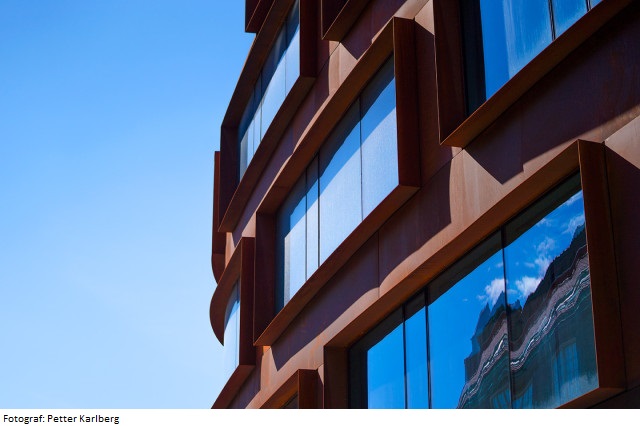The course PLAY vs GAME is divided into two parts PLAY and GAME.
The first part focusing on the concept PLAY and consists of the design of a small/medium building with an specific yet open programme in the form of a Kindergarten/pre-school.
The second part GAME the design task will be a larger urban area.
Contemporary theory of play and game, such as game theory will be mixed with an overview of play and game in the architectural and urban history from Froebel and Durand through Lefvebre, van Eyk and Niewenhuis up to recent discussions as Christoffer Alexander, Will Wright and David Harvey.
Great emphasis will placed on the social interplay with the production of architectural and urban space.
A52P2B Design Process - Studio 5:2 12.0 credits
This course has been discontinued.
Decision to discontinue this course:
No information inserted
Information per course offering
Course offerings are missing for current or upcoming semesters.
Course syllabus as PDF
Please note: all information from the Course syllabus is available on this page in an accessible format.
Course syllabus A52P2B (Autumn 2012–)Content and learning outcomes
Course contents
Intended learning outcomes
PLAY vs GAME, part 2 (Game), 5th year
Introduction (part 1+2)
Today we have gradually come to understand that architecture is not only governed by processes but is itself a process. Buildings and cities evolve in time through interaction with actions taking place outside or within themselves. This gives the term context a new meaning not only signify the immediate surroundings but the whole contemporary situation.
These interaction take more or less formal form, they can be formal, ritualised or mere haphazardly random. Often these interactions, be it social or formal are describe by the notions of play and game.
Play and game is essential in society, were play is a non-purposive endlessly interpretative process whereas game is purposeful, focused and driven towards an objective. Play in this sense is a creative tool (finding not searching) and game is a generative tool. A game is a specific way of problemsolving, play is more open. A game has a predictable resolution, play may not. It allows for emergence, novelty, surprise.
The course PLAY vs GAME take these two concepts as a starting point for the contemporary design process and its relation to architecture and urban design problems.
Overall goals
The course is part of the Design Process Studio which aim is to develop new tools and methods for architectural design, and to create new forms of space.
2. The course/project goal is to increase the student's knowledge in this area/field and skills/knowledge in the field of architecture in general. The students will enter the project with varying degrees of knowledge/skills and will subsequently end up at different levels at the end of the course/project.
3. The individual student must show an increase in the particular skills/knowledge offered in the studio and in the field of architecture in general.
Course goals (part 1+2)
1. The aim of the course is to expound the knowledge of the design process and develop the students design capacity and foster greater awareness how to handle design problems.
2. The student are expected to show a progress in their individual knowledge and skills related to the programme.
Literature and preparations
Specific prerequisites
One year fully approved architectural studies at the advanced level, courses and projects.
Literature
A detailed list of course literature will be presented at the beginning of the course
Examination and completion
Grading scale
Examination
- PRO2 - Project part 2, 3.0 credits, grading scale: P, F
- PRO1 - Project part 1, 9.0 credits, grading scale: P, F
Based on recommendation from KTH’s coordinator for disabilities, the examiner will decide how to adapt an examination for students with documented disability.
The examiner may apply another examination format when re-examining individual students.
If the course is discontinued, students may request to be examined during the following two academic years.
The course consists of two parts; a fulfilled and delivered project work (9 credits) and a passed final assessment (3 credits). There is at least one intermediate assessment during the course.
Other requirements for final grade
a) Presentation requirements
The students are requested to deliver for the second part GAME a digital urban plan, showing the urban area developing over space and time
The studio presentation will be part of the future diploma portfolio and shall be delivered in an appropriate and fully qualified way.
b) Examination
80% attendance. Active participation in lectures, tutorials, and seminars etc. Passed intermediate and final assessments. Compulsory attendance during the assessment reviews.
Completion: The project work shall be delivered and, if necessary, reworked within the set time limit. See general directions.
(Overall principle: Autumn term projects must be approved during the following Spring term: Spring term projects must be approved before the start of the following Autumn term. The reworked projects must be delivered at least one week before the time limit.)
The project work is to be documented in a portfolio, including drawings, analysis and models. The work process shall be legible.
Examiner
Ethical approach
- All members of a group are responsible for the group's work.
- In any assessment, every student shall honestly disclose any help received and sources used.
- In an oral assessment, every student shall be able to present and answer questions about the entire assignment and solution.